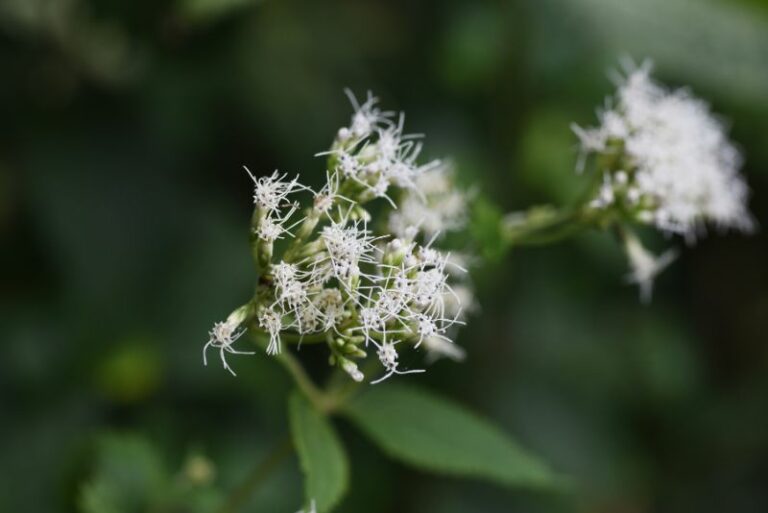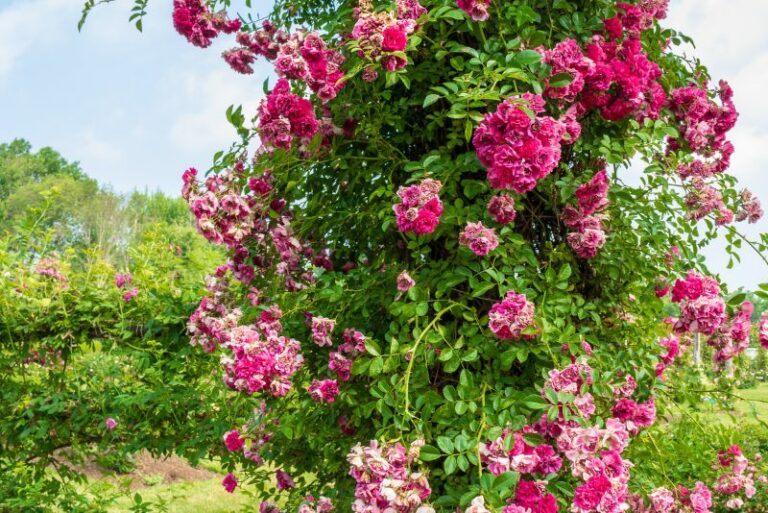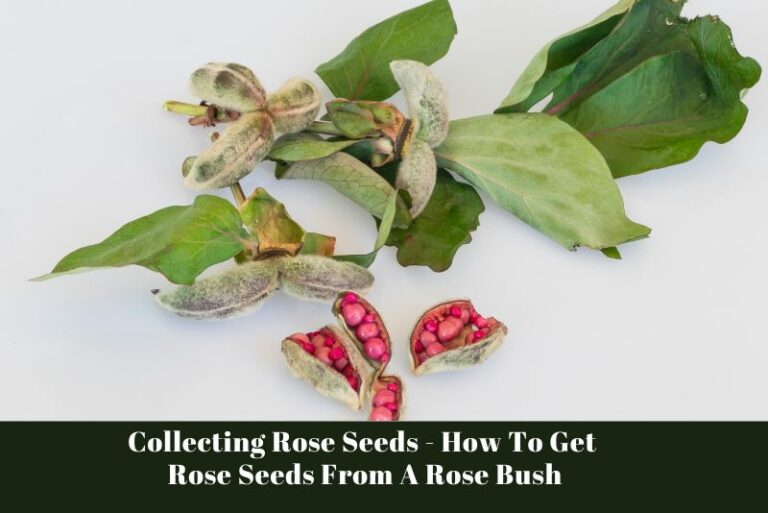Desert Bluebells: How to Plant, Grow, and Care For Phacelia Campanularia
Desert bluebells are the kind of flower that could easily escape notice at first glance. A passerby on a walk through the desert may mistake the low-growing plants for another unfamiliar scrub and keep wandering. But those who pause to peek closer will discover beauty hidden in plain sight.
Beyond the delicate clustered bells that give these wildflowers their name, desert bluebells hold secrets worth unearthing for any gardener hoping to transform bare backyard into a veritable oasis.
Read on, brave adventurer, and I’ll share what I’ve learned growing these hardy plants from seed to bloom, so you too can uncover desert bluebells’ subtle splendor and have neighbors doubting their eyes at the sight of wildflowers where none grew before.
Desert Bluebells Overview
| Property | Information |
|---|---|
| Common Name(s) | Desert Bluebells, California Bluebell |
| Scientific Name | Phacelia campanularia |
| Family | Boraginaceae |
| Height | 1-2 feet |
| Light | Full sun |
| Water | Low to moderate |
| Soil | Well-draining soil, can tolerate sandy and rocky soils |
| Fertilizer | Not typically required, but a slow-release granular fertilizer can be used in poor soils |
| Pests and Diseases | Generally pest-free, but watch for aphids and powdery mildew |
Please note that while this table provides a general overview of desert bluebells, specific care requirements can vary based on your local climate and soil conditions. Always consult with a local gardening expert or extension service for the most accurate information.
All About Desert Bluebells
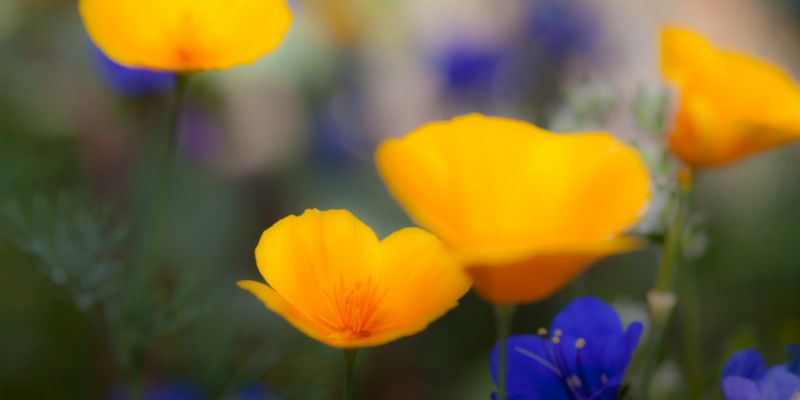
Desert Bluebells (Phacelia campanularia) are a species of flowering plant in the Boraginaceae family, native to the desert regions of southwestern United States and northern Mexico. They are a hardy plant, able to survive in arid conditions and poor-quality soils.
The plant is notable for its vibrant blue flowers, which typically bloom in the spring. Each flower is bell-shaped, hence the plant’s name, with a spread of 2 to 3cm and five rounded lobes. These flowers attract a variety of pollinators, including bees, butterflies, and hummingbirds.
The life cycle of Desert Bluebells is fascinating. The seeds can lay dormant in the desert soil for years, even decades, waiting for the right conditions to germinate. This usually occurs after a period of heavy rainfall, which is rare in their native habitat.
The foliage is also interesting, as it is coated in a layer of fine hairs. This is believed to aid in water retention, by reducing the rate of evaporation from the leaves. The stems are also hairy, typically growing between 30 to 60 cm tall.
In terms of cultivation, Desert Bluebells are a popular choice for gardeners looking to add a splash of color to their landscapes. They are relatively low maintenance, requiring little water and generally resistant to common plant diseases. Their resilience and vibrant hue make them an excellent choice for rock gardens or xeriscaping designs.
Varieties of Desert Bluebells
There are a few different varieties of Desert Bluebells, each with their own unique characteristics:
- Phacelia campanularia ssp. vasiformis: This subspecies is native to the Mojave Desert and is known for its larger, more vibrant flowers. The flowers are known to emit a lovely, delicate fragrance that adds to their allure. They share the same bell-shaped blossom and hairy foliage, but their stems tend to be a bit shorter, averaging around 20 to 50 cm.
- Phacelia campanularia ssp. campanularia: Native to the Sonoran Desert, this subspecies is known for its slightly smaller but more profuse flowers. They don’t carry a noticeable scent, but they share the same vibrant blue hue as the vasiformis subspecies. Their stems are slightly more robust, growing up to 60 cm tall.
- Phacelia campanularia ‘Blue Ruffles’: This is a cultivated variety renowned for its ruffled flowers, which give the plant added texture and depth. The scent is subtle, similar to the ssp. vasiformis variety, and they share the same hairy foliage and resilience to arid conditions.
The history of these varieties largely aligns with the history of the Desert Bluebell species. The varieties have evolved naturally in different desert regions, adapting to local conditions. ‘Blue Ruffles’ is a product of selective breeding by gardeners and horticulturists, seeking to enhance the plant’s aesthetic appeal.
In terms of their appearance, all varieties share the iconic bell-shaped flower and hairy leaves and stems. The primary differences lie in the size and profusion of the flowers, and in the case of ‘Blue Ruffles’, the distinctive ruffled petals.
The scent varies between varieties, with some emitting a slight fragrance and others being largely scentless. However, all varieties are equally adept at attracting pollinators.
Despite their differences, all these varieties share the Desert Bluebell’s remarkable resilience and adaptability, thriving in arid conditions and poor-quality soils. This makes all varieties an excellent choice for gardeners seeking a low maintenance, drought-resistant plant with striking visual appeal.
Desert Bluebells Care Procedures
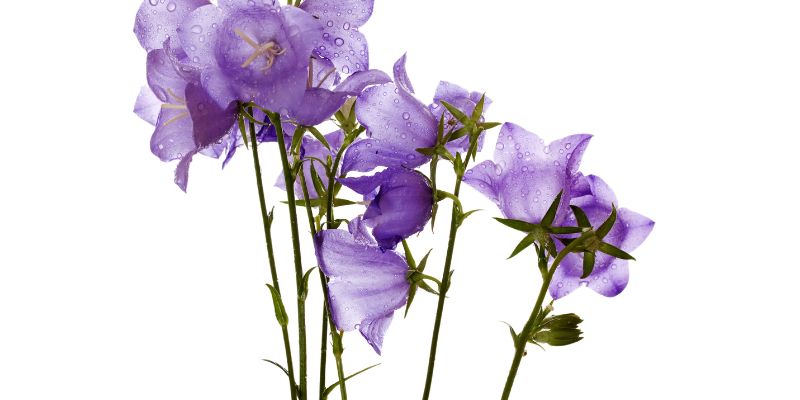
Tending to Desert Bluebells in your garden is relatively simple, with a few key care procedures to keep in mind:
Light and Temperature
Desert Bluebells thrive in full sunlight. They are adapted to the intense sun exposure of their native desert habitats, so a location that provides direct sunlight for most of the day would be ideal. Nevertheless, they can tolerate partial shade, especially in areas with extremely hot summers. But remember, less sunlight could lead to fewer flowers.
As for temperature, Desert Bluebells are incredibly tolerant of heat and are adapted to thrive in temperatures that would be too harsh for many other plants. They can survive in temperatures exceeding 100 degrees Fahrenheit. However, they are not frost-tolerant, and exposure to freezing temperatures can damage or kill the plant. If you live in a region where winters are harsh, it’s advisable to grow your Desert Bluebells in pots that can be brought indoors during colder months. For indoor care, ensure that the plant is near a sunny window and the temperature is kept above freezing.
In summary, when it comes to light and temperature, Desert Bluebells need plenty of both. They love the sun and heat, but protection from freezing temperatures is a must.
Water and Humidity
Desert Bluebells, true to their desert origins, are highly drought-tolerant. They have evolved to survive in environments where water is scarce, so overwatering is a bigger concern than underwatering. A good rule of thumb is to allow the top inch of soil to dry out before watering again. Deep, infrequent watering is better than frequent shallow watering, as it encourages the plant’s roots to grow deeper into the soil.
When it comes to watering your Desert Bluebells, it’s all about balance. Too little water and the plants may wilt or fail to flower. Too much water, especially in poorly-drained soils, can lead to root rot—a serious condition that can kill the plant. To avoid overwatering, ensure the soil is well-draining. Using a sandy or gritty soil mix, similar to what the plants would experience in their native desert habitats, can help improve drainage.
In terms of humidity, Desert Bluebells are adapted to the dry air of desert environments and do not require high humidity levels. In fact, high humidity can encourage the growth of mold and other fungal diseases. If you’re growing Desert Bluebells indoors and your home has high humidity, consider using a dehumidifier or placing your plant in an area with more airflow.
In summary, when caring for Desert Bluebells, it’s important to mimic their natural desert habitat as much as possible. That means providing plenty of light and heat, minimal water, and low humidity. With these conditions, your Desert Bluebells will not only survive, but thrive.
Soil, pH, and Soil Preparation
Soil Type
Desert Bluebells prefer a well-drained soil that mimics their natural desert habitat. Sandy or gritty soils are an excellent choice as they allow water to drain quickly, preventing the root rot that can occur in waterlogged soils. If your soil is clay-based or tends to retain water, consider amending it with sand or small gravel to improve drainage.
Soil pH
In terms of pH, Desert Bluebells are highly adaptable and can thrive in a wide range of soil pH levels. However, they tend to prefer slightly alkaline conditions, with a pH between 7.0 and 8.0. If your soil is overly acidic, you can raise the pH by incorporating limestone into the soil. Conversely, if your soil is too alkaline, you can lower the pH by adding sulfur or peat moss.
Soil Preparation
Preparing the soil for Desert Bluebells involves ensuring the soil is loose and well-draining. Start by removing any existing turf or weeds from the planting area. Once the area is clear, loosen the soil with a garden fork or tiller to a depth of about 12 inches. If the soil is heavy or clay-like, amend it with coarse sand or small gravel to improve drainage. Test the soil pH and adjust if necessary, as discussed above. Finally, smooth the soil surface with a rake and water thoroughly, allowing the water to drain away before planting your Desert Bluebells.
In summary, Desert Bluebells are fairly easy to grow provided they have well-drained soil, a slightly alkaline pH, and a sunny location. Proper soil preparation plays a crucial role in ensuring the health and vitality of these beautiful desert plants.
Fertilizer
Though Desert Bluebells are resilient and can thrive in poor-quality soils, the addition of a balanced fertilizer can help promote vigorous growth and a lush display of flowers. Here’s a detailed guide on fertilizing your Desert Bluebells:
Fertilizer Type
Choose a balanced, slow-release granular fertilizer with an N-P-K ratio of 10-10-10. This ensures that your Desert Bluebells receive an even distribution of Nitrogen (N), Phosphorus (P), and Potassium (K), each of which plays a crucial role in plant health. Nitrogen aids in leaf development, Phosphorus contributes to root, flower, and fruit development, and Potassium enhances overall plant vigor.
When to Fertilize
Desert Bluebells typically benefit from fertilization in the early spring, just as new growth begins to emerge. This gives the plants a nutrient boost after the dormant winter months and helps fuel the growing season ahead.
How to Apply Fertilizer
Apply the fertilizer according to the package instructions, being careful not to overdo it. Excessive fertilizer can cause salt build-up in the soil, which can damage the plant’s roots. Sprinkle the fertilizer around the base of the plant, keeping it at least an inch away from the stem to avoid burning the plant. After applying the fertilizer, water the area thoroughly to help dissolve the granules and carry the nutrients into the soil.
Fertilizer Precautions
It’s important to remember that while fertilizing can benefit Desert Bluebells, these hardy plants are adapted to grow in nutrient-poor soils and do not require frequent fertilization. Over-fertilizing can lead to lush, soft growth that is more susceptible to pests and diseases. A once-a-year feeding in the spring is typically sufficient.
In summary, while Desert Bluebells are not heavy feeders, an annual application of a balanced fertilizer can help support their growth and flowering. However, it’s crucial to apply fertilizer judiciously and avoid over-feeding, as this can do more harm than good.
Repotting
Desert Bluebells can benefit from periodic repotting to refresh the soil and accommodate the plant’s growing root system. Here’s a comprehensive guide on repotting your Desert Bluebells:
When to Repot
Desert Bluebells typically need to be repotted every 1-2 years, preferably in the spring just before the active growing season begins. However, if the plant appears to be outgrowing its current pot or if the health of the plant declines, it may be time to repot sooner.
Choosing the Right Pot
Choose a pot that is one size larger than the current pot. The pot should have ample drainage holes to prevent waterlogging. Remember, Desert Bluebells prefer well-drained conditions similar to their natural desert habitat. Terra cotta pots are a good choice as they allow the soil to dry out more quickly than plastic pots.
Potting Mix
Use a well-draining potting mix, ideally one designed for cacti or succulents. You can also create your own mix using equal parts of coarse sand, regular potting soil, and small gravel or perlite.
The Repotting Process
Start by watering the Desert Bluebells a few days before the repotting. This will make the process of extracting the plant from its current pot easier and less stressful for the plant. When you’re ready to repot, gently remove the plant from its current pot, shaking off excess soil from the root ball. Inspect the roots for any signs of disease or rot and prune if necessary. Place the plant in the new pot, making sure it’s centered. Fill in around the plant with the potting mix, pressing it down lightly to remove air pockets. Water the plant thoroughly and place it in a sunny location.
Post-Repotting Care
After repotting, don’t fertilize for at least a month to avoid burning the roots. Keep an eye on the moisture levels of the soil—while it should be kept slightly moist, be careful not to overwater, as this can lead to root rot.
In summary, repotting Desert Bluebells involves a few key steps: choosing the right time, selecting a suitable pot, preparing the potting mix, and performing the repotting process with care. With the right approach, repotting can help your Desert Bluebells flourish and continue to add beauty to your home or garden.
Propagation
Desert Bluebells can be propagated through several methods including division, cuttings, and seeds. Here’s a step-by-step guide on each method:
Propagation by Division
As mentioned in the repotting section, division involves splitting the root ball into several parts and repotting them. This method works best in the spring, just before new growth begins. Here’s how:
- Gently remove the plant from its pot and separate the root ball into two or more sections. Ensure each section has a healthy chunk of roots and several shoots or buds.
- Plant each section in a separate pot filled with a well-draining potting mix.
- Water thoroughly and place the pot in a sunny location.
Propagation by Cuttings
Desert Bluebells can also be propagated from stem cuttings. This approach is best done in early summer.
- Cut a healthy stem just below a leaf joint or node. The cutting should be about 4-6 inches long.
- Remove the leaves from the lower half of the cutting and dip the cut end in a rooting hormone.
- Stick the cutting into a pot filled with a moist, well-draining potting mix.
- Cover the pot with a plastic bag to create a humid environment and place it in a location that receives bright, indirect light.
- Keep the soil moist but not waterlogged. The cuttings should develop roots in a few weeks.
Propagation by Seeds
Growing Desert Bluebells from seeds is a rewarding endeavor, but it requires patience as germination can take several weeks.
- Sow the seeds in a shallow tray filled with a well-draining potting mix. Barely cover the seeds with the soil.
- Place the tray in a sunny location and keep the soil lightly moist.
- Once the seedlings are large enough to handle, transplant them into individual pots.
In summary, Desert Bluebells can be propagated through division, cuttings, and seeds. Each method has its own benefits, so choose the one that best suits your gardening needs and experience level. With a little care and patience, you’ll soon have new Desert Bluebell plants to add to your collection.
Pruning
Proper pruning can keep your Desert Bluebells healthy while promoting denser growth and more vibrant blooms. Here’s a detailed guide on how to prune your Desert Bluebells:
When to Prune
Desert Bluebells should generally be pruned in the early spring, just before the new growth starts. Pruning at this time encourages new growth and helps shape the plant for the growing season ahead. However, you can also do light pruning throughout the year to remove dead or damaged foliage.
Tools Needed
For pruning Desert Bluebells, you’ll need a pair of sharp, clean pruning shears. Make sure to disinfect them before and after use to prevent the spread of diseases. Small, handheld shears are perfect for precision cuts on this small plant.
Pruning Process
Begin by pruning any dead, yellowing, or diseased leaves at their base. Make sure not to leave any stubs which can be an entry point for diseases. Then, trim back any overgrown stems to maintain the desired shape and size of the plant. If the plant is growing too densely, remove some of the inner branches to improve air circulation.
Post-Pruning Care
After pruning, avoid watering your Desert Bluebells immediately to allow the cut areas to heal over and prevent the onset of rot. It’s also a good idea to place the pruned plant in a more shaded spot for a few days to recover.
In summary, proper pruning of Desert Bluebells involves determining the right time, preparing the tools, and following the pruning process with care. By following these steps, you can help your Desert Bluebells thrive while maintaining an attractive, manageable shape.
Troubleshooting
Caring for “Desert Bluebells” can present a variety of challenges, from common growing problems to pests and diseases. This section aims to provide a detailed troubleshooting guide to help you identify and address these issues.
Growing Problems
Desert Bluebells, like any other plant, can exhibit a number of growing problems. These may include wilted leaves, slow growth, or lack of blooms. Often, these issues can be traced back to poor soil conditions, inadequate lighting, or incorrect watering practices.
- Wilted Leaves: If your Desert Bluebells’ leaves are wilting, it might be due to overwatering or underwatering. Check the soil moisture levels and adjust your watering schedule accordingly. Remember, Desert Bluebells prefer a well-draining soil that’s kept slightly moist but never soggy.
- Slow Growth: Slow growth can be a sign of nutrient deficiency. Regular application of a balanced fertilizer, particularly during the growing season, can boost your plant’s growth.
- Lack of Blooms: If your Desert Bluebells aren’t blooming as expected, they may not be getting enough light. These plants thrive in sunny locations, so ensure they are receiving plenty of bright, indirect light.
Pests
Pests can hinder the health and growth of Desert Bluebells. Common pests include aphids, spider mites, and mealybugs.
- Aphids: These small, soft-bodied insects suck the sap from plants, leaving them weak and stunted. To control aphids, you can use insecticidal soap or introduce beneficial insects like ladybugs into your garden.
- Spider Mites: Spider mites are tiny pests that also suck plant sap, often leaving fine webbing on the plants. Regularly misting your plants and wiping the leaves can help keep spider mites at bay.
- Mealybugs: Mealybugs appear as white cottony masses on the plants. They can be controlled by wiping the infected areas with a cotton ball soaked in alcohol.
Diseases
Diseases that commonly affect Desert Bluebells include root rot and fungal leaf spots.
- Root Rot: Overwatering and poor drainage can lead to root rot, a condition that causes the roots to turn brown and mushy. To avoid this, always make sure you’re watering your Desert Bluebells correctly and that they’re planted in well-draining soil.
- Fungal Leaf Spots: Fungal leaf spots appear as dark spots on the leaves. They can be managed by pruning the affected leaves and avoiding overhead watering.
To summarize, solving issues with Desert Bluebells involves identifying the problem, whether it’s a growing issue, pest infestation, or disease, and then implementing the appropriate solution. By tackling these problems early, you can ensure your Desert Bluebells remain healthy and vibrant.
Frequently Asked Questions about Desert Bluebells
Q1: How often should I water my Desert Bluebells?
A: Desert Bluebells thrive in well-drained soil that is kept lightly moist. The watering frequency can vary based on the weather and the soil type, but generally, you should water your Desert Bluebells once the top inch of soil feels dry to the touch.
Q2: Why are the leaves of my Desert Bluebells turning yellow?
A: Yellowing leaves can be a sign of overwatering or underwatering. Check the soil’s moisture level to determine if your plant needs more or less water. If the issue persists, it might be due to a nutrient deficiency or a disease.
Q3: Can Desert Bluebells grow in shade?
A: Desert Bluebells prefer sunny locations to thrive and bloom. They can tolerate some shade, but too much shade can lead to poor growth and fewer blooms.
Q4: How do I deal with pests on my Desert Bluebells?
A: Common pests like aphids, spider mites, and mealybugs can be controlled using insecticidal soap or by introducing beneficial insects like ladybugs. It’s also useful to regularly check your plants for any signs of pests.
Q5: Why are my Desert Bluebells not blooming?
A: Lack of blooms can be due to insufficient light, inadequate watering, or nutrient deficiency. Ensure your Desert Bluebells are getting enough light, and consider feeding them with a balanced fertilizer during the growing season.
Remember, every plant is unique and might require slightly different care. Continue to observe your Desert Bluebells and adjust your care routine as necessary to keep your plant healthy and thriving.


